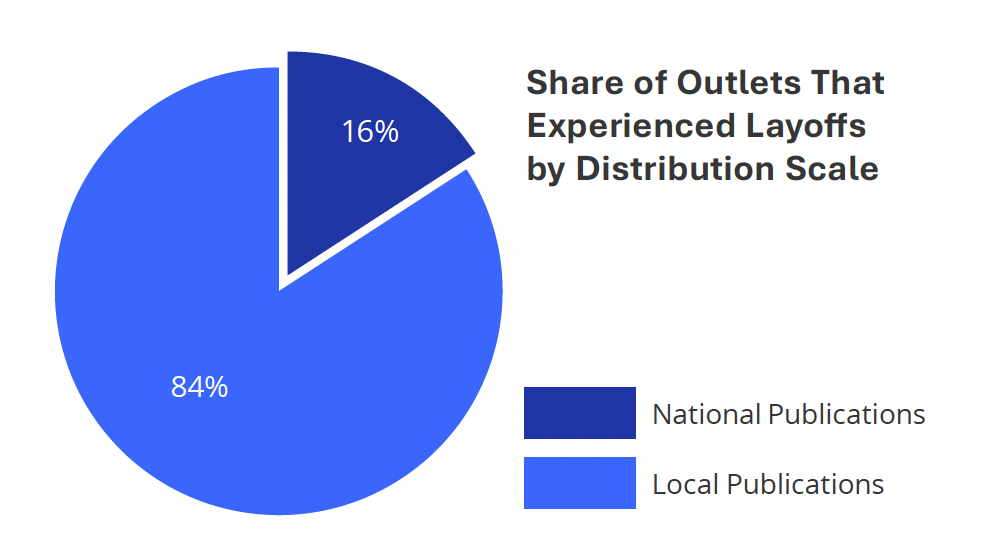
Why You Need to Craft Bylines If You Aren’t Already (and How to Get Them Placed)
July 27, 2021
How To Build Trust When Working With Influencers
November 23, 2021
Why You Need to Craft Bylines If You Aren’t Already (and How to Get Them Placed)
July 27, 2021
How To Build Trust When Working With Influencers
November 23, 2021The Shifting Media Landscape:
7 Key Elements That Should Impact Your Earned Media Strategy

By Katherine Gotts, SVP, Research and Analytics
A decade ago, even the savviest futurist might have been hard pressed to accurately envision today’s news environment and culture. Social media and online news have equalized the media machine, diminishing the difference in influence between traditional journalism and fledgling blogs, newsletters and even popular social handles.
COVID-19, as it has in so many areas, accelerated new trends across the media landscape, including the unfortunate shrinking of newsrooms. Against this backdrop, the Access Intelligence team has prepared a report examining the ways in which the pandemic has both fast-tracked and complicated the shifting media landscape – with insights and tips to help PR practitioners adjust earned media strategies accordingly.
“The nature of the local and national media landscape continues to be buffeted by economic, social and political pressures – with no signs of foundational changes slowing down as we enter year two of the pandemic,” said Conor Febos, Access VP, Media. “Core to our focus at Access is staying ahead of these changes while helping our clients break through and adapt in an ever-evolving industry that continues to be equal parts exhilarating and challenging.”
You can read the full report here. Meanwhile, we’ll cut to the chase with 7 key issues and ways you should be thinking about each:
1. The ever-smaller newsroom
The economic costs of the COVID-19 pandemic drastically hastened job loss in newsrooms. In 2020, journalism saw record layoffs and job cuts, with more than 16,160 jobs lost – a 200% increase.
- Shrinking newsrooms are leading to a stronger preference for 1-on-1 email pitching from journalists. Email based outreach is vastly more convenient for reporters and less disruptive to busy schedules.
- Present clear and concise pitches with relevant assets included so the material is as accessible and plug-and-play as needed.
- Journalists are reporting on a broader range of topics to cover disparate newsroom needs, so highlight how your story ties to general news trends.
- Some 42% of journalists plan their stories a week to a month ahead. Track major news items and current media trends to know how to approach reporters at the right time.

2. A revolution in news consumption habits
The ways in which news is disseminated and consumed has seen dramatic change. Journalists are increasingly moving away from traditional newsrooms to alternative formats like email newsletters. The media’s shift to digital has accelerated during the pandemic, with audience metrics and social media “shareability” key drivers for media outreach.
- Make your pitches stand out with varied visuals to accompany potential stories.
- Optimize pitches and content to tie into larger trends likely to maximize audience interest.
- Track the trajectory of journalists from traditional outlets to other digital media types like newsletters and understand how their news cycle cadences and operations differ.
3. News deserts and the decline of local media
Local news outlets have been forced to cut costs, reduce the size of newsrooms, or shut down entirely. Over the past 15 years, more than 2,000 U.S. newspapers have closed – more than a quarter of the total newspapers in the country. The brunt of the loss has taken place in local newspapers.
- Show respect for the heavy workload on the local journalists who remain by delivering brief (under 200 words), story-focused pitches focused on why the news matters to their readers and by limiting follow-ups.
4. Corporate influence and tech industry backlash
As Big Tech expands its influence over how information is distributed and accessed, tension between them and media is increasing. Though many large tech brands have taken steps to offset their impact on journalism, news outlets are losing billions in revenue as readers increasingly find their news on social media platforms and aggregators.
- Roiling beneath these big changes, the media must continue to cover any newsworthy developments on major tech brands. However, the conflicts of interest present have created an environment of friction, with implications both for objectivity and the receptiveness of both parties.
- At a broader level, media still consider press releases and news announcements from companies to be worth covering, but they aren’t interested in writing puff pieces focused on a news item.
- Instead, they are looking to contextualize for their readers why it matters for them. Together, these challenges create a tough situation for brands seeking receptivity.

5. Newsroom culture in the era of remote work
Remote work has drastically changed the dynamics of many newsrooms, with journalists and other media professionals forced to alter how they collaborate and communicate with coworkers. Some publications have also cut their real estate to save costs during the worst of the pandemic.
- As more and more day-to-day reporting work is pushed to email, it is growing harder to keep pitches noticeable without stepping over journalists’ boundaries.
- This increase in emails has also made timing of pitching more important as journalists are increasingly overloaded.
- According to findings from Cision, pitches would ideally be emailed between 5AM-12PM Eastern on Mondays so media have time to review before their inboxes fill up.
6. Burnout in journalism
As with workers in many industries, journalists and other media professionals have seen the pandemic take a toll on their mental health. According to the Journalism and the Pandemic Survey, 70% of polled journalists reported psychological issues as their most difficult obstacle to overcome during the pandemic. PR professionals can maintain strong relationships with journalists by being respectful of their burnout when pitching.
- There are a variety of ways to help journalists feel supported by your pitches rather than overwhelmed by them:
- Include a visual element
- Tighten up a pitch and/or limit follow-upsRespond to requests for more information promptly and comprehensively
- Learn the pitching preferences of each of your media contacts and tailor your communications to matchRemember that they are people, too – don’t make every interaction transactional. Ask a question, check in – it matters, and reporters will remember even the smallest act of humanity when receiving 400+ pitches a day
70% of polled journalists reported psychological issues as their most difficult obstacle to overcome during the pandemic.
—Journalism and the Pandemic Survey
7. Public polarization and a crisis of trust in media
Since the 1970s, Americans have become increasingly less trustful of media. Trust has further decreased during the pandemic, in part due to a surge in misinformation. As journalists struggle to combat dwindling faith in their profession, there has been a shift toward referencing sources they find to be credible.
- According to media surveyed in Muckrack’s 2021 State of Journalism report, academic subject experts and C-suite executives are considered the most authoritative and credible, with over three quarters of reporters trusting them as sources.
- The way journalists get information matters, with many rating face-to-face in-person or telephone interviews as the most trustworthy.
- Major wires, known experts, academics and brand experts, in that order, were all also rated higher than other news sources for trustworthiness.
- “Fake news” is one of the top three concerns for journalists, and over half believe that ensuring content is completely accurate is the most important consideration when putting an article together. To reflect this priority, prioritize data sources considered the most trustworthy by media, including academic subject experts and C-suite executives.

So, where does this all lead? What should clients, communities, executives, etc. expect from wholesale changes in news consumption and the way information is presented by outlets? The 7 key issues outlined in this blog are just the start to understanding where we stand as PR professionals. But as much as COVID has challenged how the media landscape will move forward, it’s also reminded us how exciting change can be. The media revolution will continue to be televised, tweeted and blogged about – are you ready?